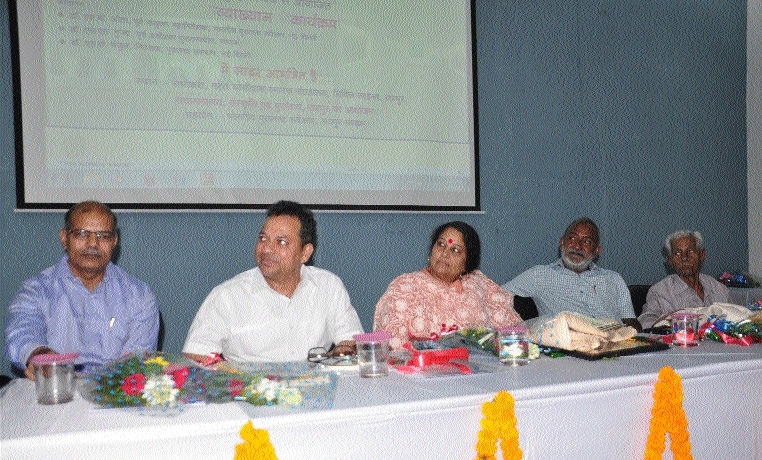Museum imbibes nationalistic feelings among rurals, observe archaeologists
| Date :19-May-2019 |

Staff Reporter:
RAIPUR
Museum is a big source of knowledge and it must be utilised as an educational institution. But today, people visit museum only for entertainment purpose, observed Former Joint Director General of the ASI Dr S B Ota while addressing the inaugural session of a symposium on “Museums as Cultural Hubs: The Future of Tradition” organised by Directorate of Culture and Archaeology, Government of Chhattisgarh and Archaeological Survey of India (ASI) at Mahant Ghasidas Museum on the occasion of International Museum Day, on Saturday. Dr S B Ota said that museum can be utilized as cultural hub where street plays based on archaeology and history can be staged in order to promote local culture.
Common people should be engaged with museum as Friend of Museum that will be helpful to promote local culture, he added. In his address, Padma Shri A K Sharma emphasized the need for preservation of historical monuments and excavation of new historical sites. Secretary of Culture Department Dr M Geetha said that layers of cultures spread the message of unity in the society. The Directorate of Culture and Archaeology is committed to develop all kinds of cultures, she added. Director of the Culture and Archaeology Anil Kumar Sahu threw light on the purpose of the programme. In-charge Superintending Archaeologist of the ASI Raipur Circle Dr Manoj Kurmi proposed the vote of thanks. Supervisor of the Directorate of Culture and Archaeology Prabhat Kumar Singh conducted the proceedings. The office-bearers of Mahaveer Intercontinental felicitated the guests.
Later, three research papers were read out. Retired professor L S Nigam and Ashok Tiwari presided over the technical session. Former Joint Director General of the ASI Dr S B Ota presented research paper on “Prehistoric Personality of Ladakh Himalayas, Jammu and Kashmir”. In his address, Dr Ota said, “Unlike most parts of the Indian subcontinent, the prehistoric background with its genesis of human history of Ladakh, Jammu and Kashmir is hardly understood. Ladakh with its complex landscape and ecological configurations is distinct and different from rest of the areas within the state and also in the country. It was probably the colonial hangover for a pretty long time in the field of archaeology that overpowered the Indian scholars so much that viewing anything beyond that western archaeologists envisaged was not doable.”
Finally, it was the efforts of Indian geologists and archaeologists in last thirty years that have now established the evidence of human occupation in this part of the sub-continent since terminal Pleistocene if not earlier, he added. Former Superintending Archaeologist of the ASI Bhopal Dr S S Gupta presented research paper on “Role of a Cultural Heritage Museum in Rural Area towards the Society under Prevalent Circumstances”. Dr Gupta said that the main aim of the museum is to spread knowledge. Knowledge acquired from the displayed objects of the past must be exploited in the present for the sake of future, he added. He further said that a museum can imbibe the nationalistic feelings among the rural masses by portraying the historic heroes of that particular area who had given up their lives in the interest of the national.
Director of Institute of Archaeology of the ASI Dr Sanjay Kumar Manjul read out his research paper on “Museum as Cultural Hubs: The Future of Tradition”. Dr Manjul said that the main objective of the museum is to spread knowledge from the objects of the past for the future. Museum is not only the place of entertainment but also it is the panorama box of knowledge in very field, he added. Deputy Director Rahul Singh, archaeologists, historians and research scholars attended the programme. Padma Shri A K Sharma expressed his concern over the pathetic conditions of the museums in the state and blamed the bureaucracy and political leadership for their negligent attitude and lack of knowledge and concern in preserving historical monuments and important sites of archaeological significance.